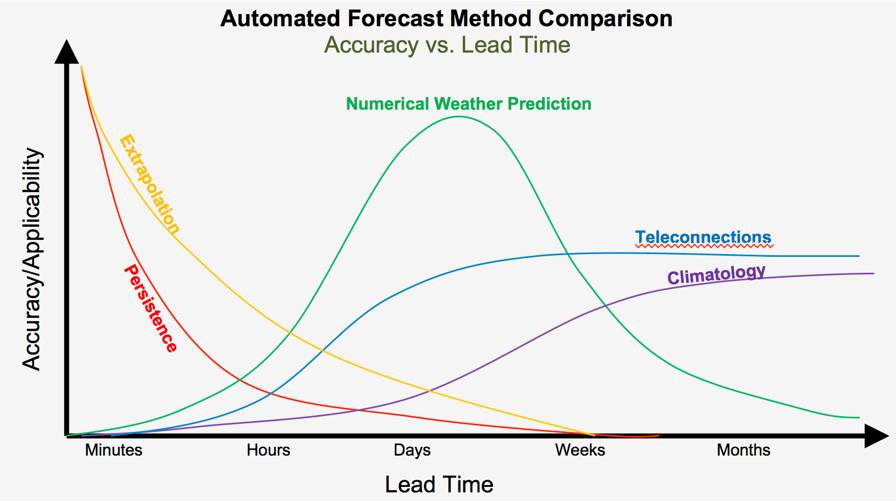The Challenges of Accurate Weather Forecasting and Understanding its Limitations
Weather forecasting is a complex field that involves understanding multiple factors that influence our climate. While forecast models have improved significantly over the years, producing highly accurate predictions more than a week in advance remains a difficult task. This article discusses some of the key challenges faced by meteorologists and the limitations of current forecasting methods.
Cosmic Drivers and Complex Interactions
One of the major challenges in weather forecasting is accounting for all the various cosmic and planetary influences that drive Earth’s climate. As the Space Weather website recognizes, phenomena like solar flares, cosmic rays, and magnetism in other planets have profound impacts on conditions here. However, incorporating these celestial dynamics into forecast models is no simple task given our limited understanding of the precise mechanisms at work. Adding further complexity is the fact that nothing occurs independently in nature - everything interacts with everything else in complex and sometimes unforeseeable ways. Minor changes to one variable can cascade into much larger effects over time through chaotic feedback loops. Meteorologists have to disentangle the observed realities from their underlying causes and impacts, which is extremely difficult given our incomplete knowledge of these intricate systems.

Limitations of Forecasting Technology and Data
Even with powerful supercomputers, the raw computing requirements to simulate Earth’s weather at fine resolutions over long timescales are astronomical. Simply doubling the spatial granularity increases the necessary processing by millions of times. Collecting comprehensive real-time data from around the globe also poses major logistical challenges. Given these constraints, forecast models make simplifying assumptions and approximations that become less accurate the further ahead predictions extend. Small early errors can exponentially magnify over time. While new techniques like finite element analysis are helping to refine simulations, fully solving the enormous sets of interacting variables governing our climate remains an immense unsolved problem.
Not Really a Science Yet
Some argue that weather forecasting is still more of an art than a true science. The underlying mechanisms driving conditions are only partially understood, and predictive equations can’t fully capture reality given present limitations. Observational patterns like ENSO cycles allow general outlooks, but fully deterministic long-term projections are impossible without breakthroughs in modeling complexity and accuracy. As one expert noted, claims of climate prediction decades or centuries ahead based on existing methods are simply unfounded. While agencies provide general outlooks that aid planning, precise forecasts beyond 7-10 days remain highly uncertain. Understanding these limitations is important for policymaking and public discussions on issues like droughts or hurricanes.
Uncertain Climate Models
Climate prediction faces even steeper challenges than short-term forecasting. General circulation models attempting to project conditions 100 years hence necessarily involve major simplifications and unknowns. They also conflate weather with climate, failing to distinguish natural variability from any human influence. Recent reports suggest climate scientists are now acknowledging such uncertainties more openly. But the overstated certainty of past consensus assessments has damaged credibility and misguided policy. Moving forward will require applying true scientific rigor instead of predetermined conclusions. Observation of long-term natural patterns like decadal oscillations offers better insight than complex models still struggling with basic mechanics.
An Evolving Field Ripe for Revolution
Overall, weather forecasting is an immensely complicated endeavor pushing against the boundaries of what’s technically and theoretically possible. However, it remains a profoundly important application of science with huge societal benefits. Continued exploration may yield paradigm-shifting insights that overturn long-held misleading concepts like the Heisenberg uncertainty principle. With rapidly advancing supercomputing, machine learning, remote sensing and theoretical frameworks like boolean algebra, entirely new forecasting capabilities seem inevitable. Rather than condemn fallible predictions, we must support meteorology’s evolution with open-minded study of realistic limitations and opportunities for progress. Incremental improvements will come through both advancing mainstream methods and respectfully exploring alternative perspectives on cosmic drivers of climate.
Understanding Forecast Uncertainties for Useful Guidance
While hype around climate predictions grabs attention, applying a healthy skepticism allows focusing on weather forecasting’s genuine and valuable contributions. Short-term projections of precipitation chances, temperature ranges and events are highly practical information within 7-10 days as NOAA indicates. Beyond this, general outlooks still offer insights for planning compared to random guessing.
Recognizing forecasting as an imperfect work-in-progress rather than infallible pronouncements also maintains reasonable public understanding. Knowing specific guidance weakens beyond a week prevents misguided expectations. Outlooks for months ahead, while less accurate in details, retain planning significance relative to historical patterns. With ongoing refinement, meteorology will realize ever more benefits - if supported by realism over expectations of certainty where none exists.
